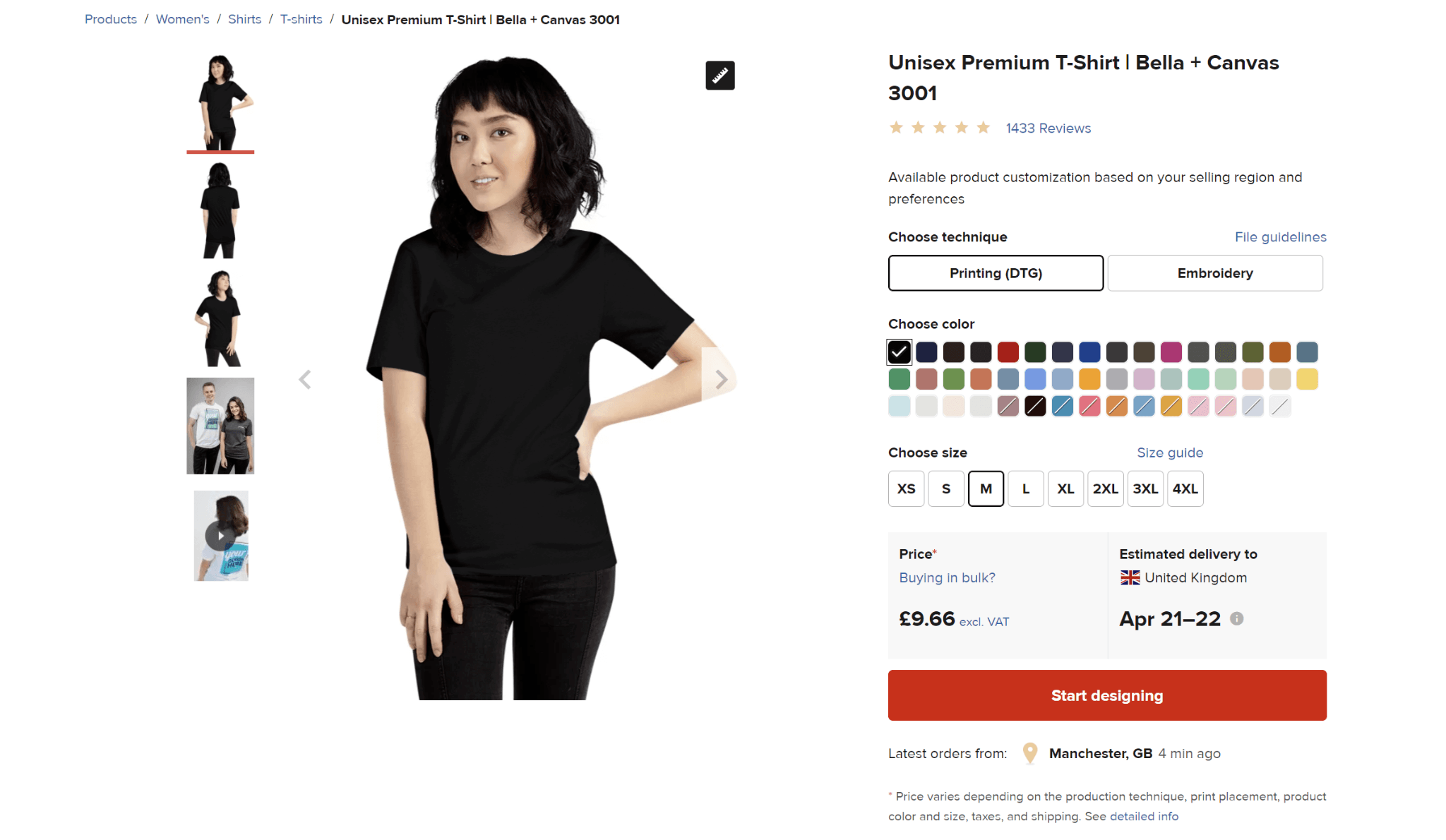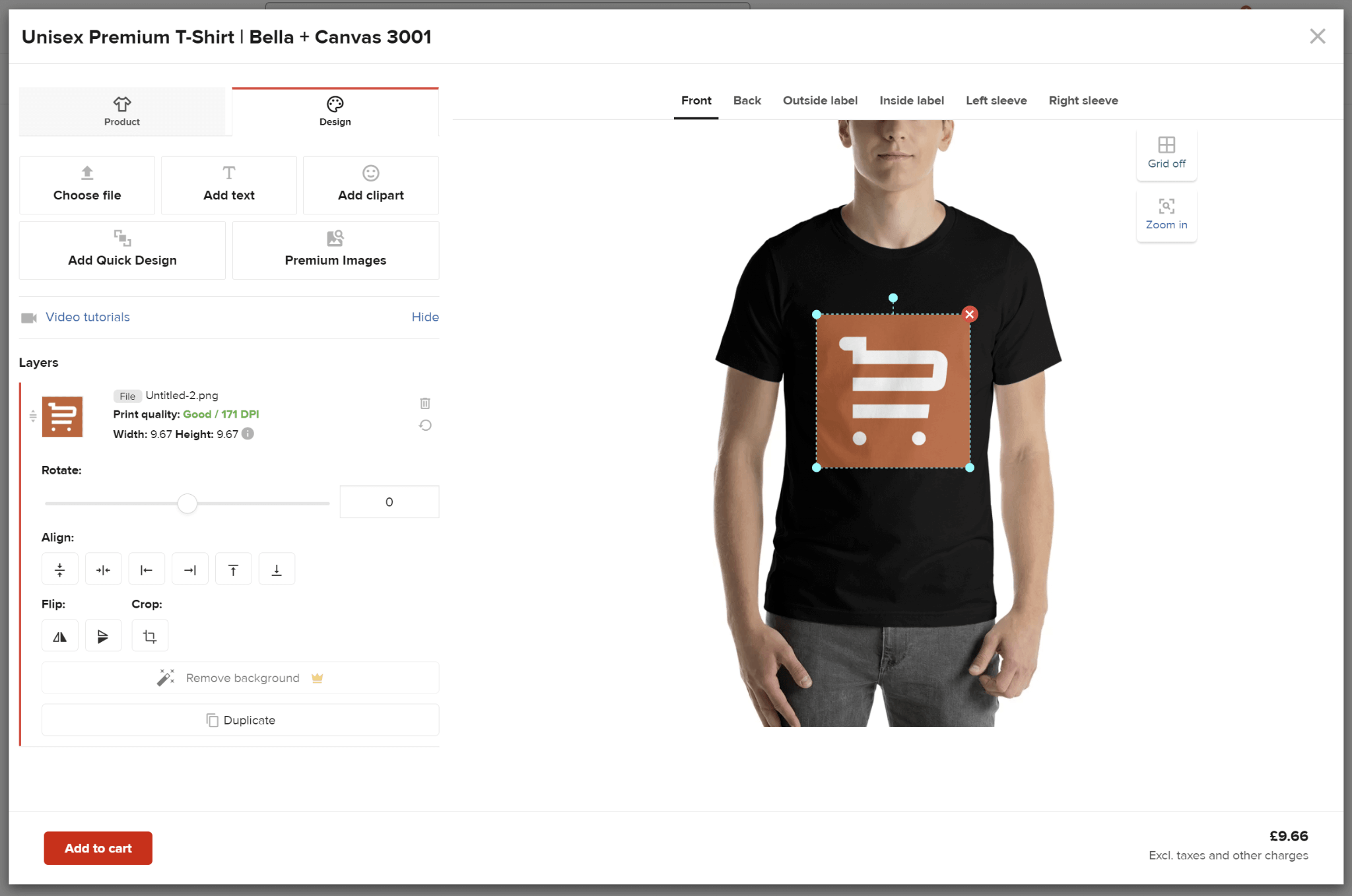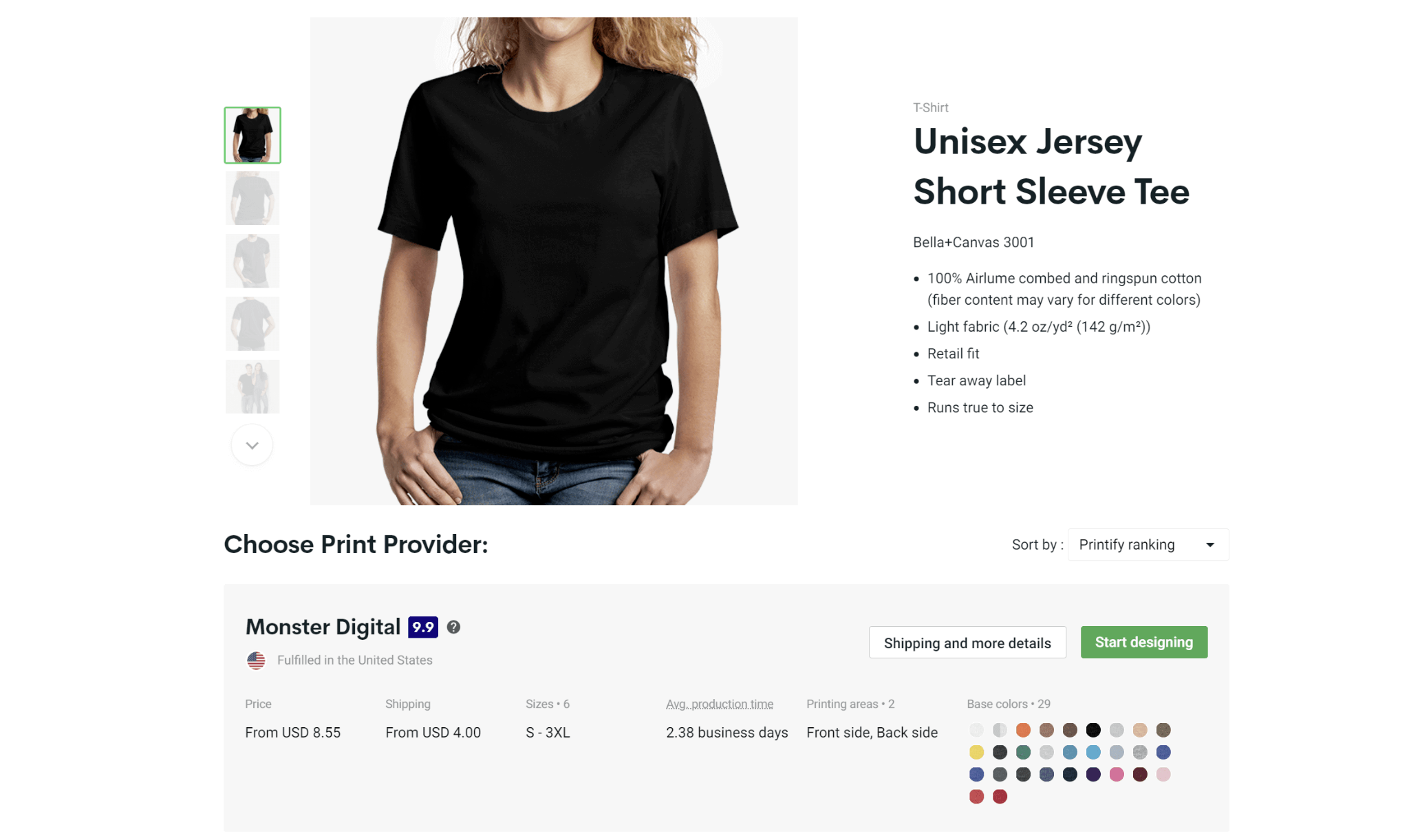Printful Vs Printify: Which Is The Better Print-On-Demand Option?
By Rodney Laws | Ecommerce

Printful vs Printify, titan vs titan: these two popular services compete in the print-on-demand marketplace, and now we’re putting them head-to-head in our comparison.
We’re going to do more than just cover the basics of what they bring to the table, though. We’ll also be looking at the print-on-demand option in general, explaining why it’s so appealing to so many.
If you’re curious about getting into ecommerce and eager to choose an accessible route that gives you the creative freedom to stand out, you’re in the right place. Let’s get started by succinctly explaining what print-on-demand actually means (beyond the obvious!), then move on to the titular battle. Here we go:
The typical ecommerce process goes like this: merchants stock up on products from suppliers, list them in their stores, take orders, and ship them out when needed. This is how physical retail has always worked, and it’s a good approach for those who have warehouse space.
The popular alternative to this approach is dropshipping. Dropshipping merchants don’t stock any products: instead, they list items that are stocked by third-party suppliers like AliExpress (adding margins for profit), then pass the orders they receive to those suppliers for processing and fulfilment. That’s it: it’s a simple process.
The chief similarity between these pathways is that the products themselves don’t change. The sellers can present them differently online, or even tweak the packaging if they keep their own stock, but the products that go to the buyers are fundamentally the same.
For those who want their products to stand out, there’s the option of selling custom products through partnering with a production facility (or creating a new one), but that’s a challenging path that requires a lot of research and design expense.
So where does the print-on-demand model fit into this?
The name is a big clue, but let’s clarify what it means. The fundamental products of print-on-demand operations — T-shirts, shoes, baseball caps, etc. — are entirely generic (and often processed and shipped through suppliers), yet there’s a custom element produced through the printing process.
You could, for instance, create a store and list a simple T-shirt with a custom logo on the front.
Upon receiving an order, you would pass it to a print-on-demand supplier that would take a plain T-shirt, customise it with the required logo, then ship it out. The result? You get to sell unique products without doing any product development or even managing your own stock. Hit a good level of print quality and you’ll look great. If you’re a great artist and/or have a great business idea, even better.
Because the items are only produced when ordered, you can (and should) provide as many options as you can think of. Multiple colour variants, alternative designs, rethought layouts… Throw together a large number of options, and you can create a well-rounded store (while collecting invaluable data about what your customers choose and what their preferences are).
When we talk about print-on-demand companies, then, we’re talking about the services to which print-on-demand orders get passed. They offer ranges of generic products along with printing and shipping options, process the orders they receive, and profit by charging more than it costs them to buy the original products and create their prints.
Printful and Printify work in this way, though they also differ in various ways that we’ll detail shortly.
In general, print-on-demand companies can make themselves unique through concentrating on specific areas. One might aim to produce the most high-quality products and price its items accordingly, while another might focus on being cheap and efficient with its order fulfilment.
As a merchant aiming to sell print-on-demand products, it’s important that you choose the service that best fits your unique needs, preferences, and intentions. While you won’t typically need to make a long-term commitment to a given service, pivoting from one to another might cause confusion with previous customers and lead to various other practical issues.
You also need to factor in the platform you’re using for your online store. Using a native integration with a print-on-demand business will make it much easier to use (each of these services is available through the Shopify App Store, for instance). The alternative of adding custom code can cause difficulties, particularly if you don’t have much technical expertise.
Founded in North Carolina in 2013, Printful has since become a dominant force in the print-on-demand industry, and for good reason.

Image: Printful
It’s a hyper-convenient service that can handle production throughout the USA, Europe, and Mexico (and ship globally). Once you’ve created your free Printful account and connected your store (there’s an integration for every popular ecommerce platform), you can get started with fleshing out your print-on-demand inventory.
This is all handled through the intuitive Printful mockup generator. If you want to produce your custom file elsewhere and upload it directly, you can, but this requires you to know how to set the right dimensions and choose the right DPI. It’s much easier to create your designs within the mockup generator, uploading images if needed or just using the available resources (including rich text options, numerous clipart categories, and even an integration with Getty Images).

Image: Printful
As noted, the Printful service is free, and this goes for every account. You pay the amount quoted for a particular product (plus the shipping you add), and make your money through raising the price in your store. Printful will even ship the items in packaging with your branding (for an added fee, admittedly), so you won’t need to do much — and if you don’t sell anything in a given month, you won’t be required to pay anything.
Founded in 2015 in Riga, Latvia, Printify offers a similar service to that of Printful, only with a focus on partnering with various print providers around the world.

Image: Printify
You sign up for a free account, choose your products, define your custom designs using a simple mockup generator, push them to your ecommerce store, then leave the orders to be dealt with on your behalf. As you’d expect, the service can fulfil orders throughout the world with global shipping (if you want to sell in New Zealand, that won’t be a problem). And if you want to order samples to try things out, you can do this directly through your on-site shopping cart (to add product designs to your store, you’ll need to use the relevant integration).

Image: Printify
The Printify mockup generator differs from the Printful equivalent in some notable ways that we’ll get into next, but you can get decent results with either one. The same can be said for the pricing, too, so let’s move on to the meat of this article: looking at the distinctions between these two services and attempting to gauge which is better.
Two popular services, each with essentially the same business model. Why should you choose one print-on-demand company over the other? Here are the biggest differences between them:
In other regards, though, Printful holds the edge. It offers the option to create a custom pattern from a provided image, for instance, which is something that Printify doesn’t feature. It also allows the addition of custom text far more frequently (it’s only supported on some product types in Printify), and allows all image additions to be resized (for some reason, an image added for embroidery in Printify can be stuck at whatever size is automatically selected).
It’s true that Printify’s tier system can allow you to get greater profit margins on your sales through discounts, but if you sell enough items through Printful then you’ll get bulk discounted rates too. Either way, you’ll cut your costs if you ramp things up — though maybe Printify can be preferable if you have a really solid idea of how much you’ll sell.
Printify and Printful are two leading print-on-demand companies, and each provides a good service that’s accessible to any ecommerce business, so there’s no clear loser here. The product quality before customisation won’t differ too much: one cotton T-shirt is akin to any other of a similar price.
And since each has distinct strengths and weaknesses, your circumstances will determine which is best for you: if Printify offers the lowest prices for the product type you’re relying on (and the partner you’ve selected has a reputation for quality), for instance, then it may be your best option.
Overall, though, the nod has to go to Printful. Having its own production facilities with the quality-control process of a big business allows it to achieve a greater level of quality, leading to custom products that look better and last longer. Its larger size also allows it to provide 24/7 customer support through live chat, leading to a superior average user experience.
Additionally, its various options for custom packaging make it much more desirable for those sellers who want to take advantage of the dropshipping model while retaining extensive creative control.
The answer, of course, is yes. Each of these services has a free tier that you can use indefinitely, and each will remain linked to the products it pushes to your store. If one seems better for a given product type (better shipping costs, perhaps) but the other is preferable for all others, you can use the former just for that product. Be wary, though, as this can easily cause confusion.
What happens when a customer contacts you to note that their purchase hasn’t arrived? You need to first determine which company it went through, complicating your support process. And then there’s the matter of using the mockup generators. Do you want to spend the time comparing the rates for each new product you add before you proceed?
This will prove an arduous task that will likely waste enough of your valuable time to defeat the purpose of attempting it in the first place.
Unless you have a truly compelling reason to use multiple print-on-demand services at once, you should pick just one print provider and stick with it — and Printful seems like the way to go.